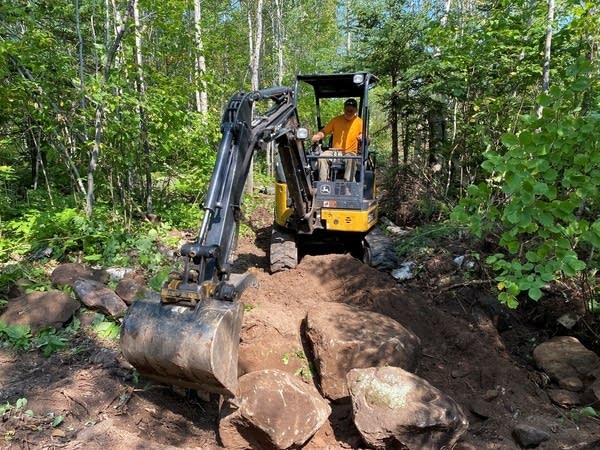As mountain biking booms in Minnesota, pro builders help meet the demand for trails

Adam Harju uses a 3-ton excavator to move huge rocks into place on a new mountain bike trail he’s building near Split Rock Lighthouse State Park in northeastern Minnesota on Aug. 9.
Dan Kraker | MPR News
Go Deeper.
Create an account or log in to save stories.
Like this?
Thanks for liking this story! We have added it to a list of your favorite stories.


